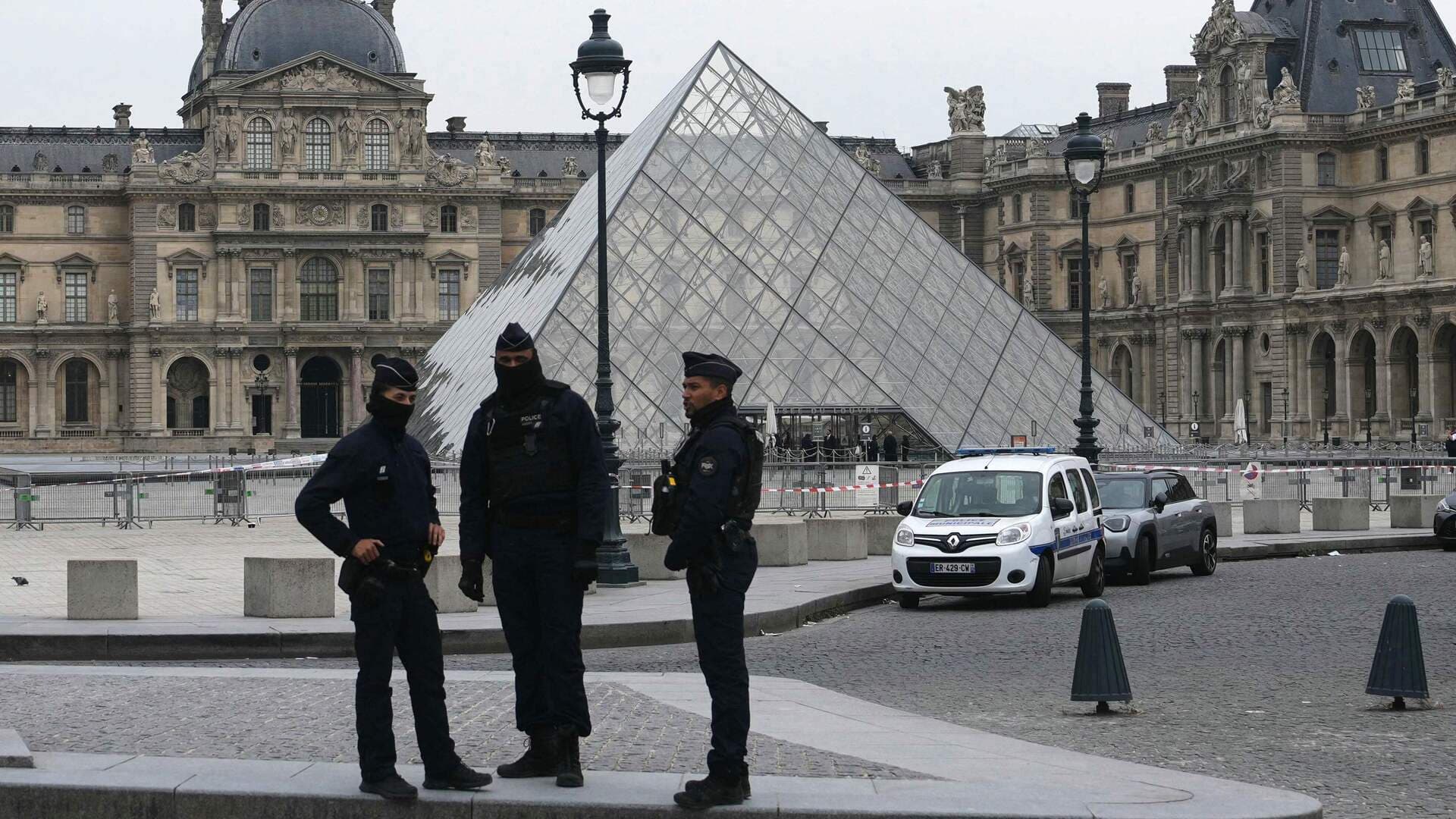Loading News Article...
We're loading the full news article for you. This includes the article content, images, author information, and related articles.
We're loading the full news article for you. This includes the article content, images, author information, and related articles.
A daring daylight robbery at the Louvre Museum in Paris, where priceless Napoleonic jewels were stolen, highlights critical vulnerabilities in global cultural heritage protection, prompting Kenyan authorities to reinforce local site security.

In a scene reminiscent of a high-stakes thriller, a gang of thieves executed a "brazen" daylight robbery at the iconic Louvre Museum in Paris on Sunday, October 19, 2025, making off with several priceless Napoleonic jewels. The incident, which unfolded within minutes of the museum's opening, has sent shockwaves through the international cultural community and raised urgent questions about the security of invaluable heritage collections worldwide.
The audacious heist saw the thieves, reportedly disguised as construction workers, use a mechanical ladder to access a first-floor window of the museum's Apollon Gallery, where the French Crown Jewels are displayed. They then smashed display cases and fled on motorbikes, all while visitors were present inside the world's most-visited museum. French Culture Minister Rachida Dati described the operation as a professional "four-minute operation."
The Louvre robbery is not an isolated incident in the history of art theft. The museum itself has a history of high-profile thefts, most famously the 1911 disappearance of the Mona Lisa, which was recovered two years later. Other notable art heists include the 1990 Isabella Stewart Gardner Museum theft in Boston, where 13 works valued at an estimated $500 million remain unrecovered, and multiple thefts of Edvard Munch's "The Scream."
The recent incident has intensified scrutiny on museum security, particularly in France, where several other museums have been targeted in recent months. Critics point to understaffing and delayed security upgrades as contributing factors. A pre-report by the French Court of Audit, partially accessed by Franceinfo, reportedly revealed "considerable" and "persistent" delays in updating the Louvre's security systems, with one-third of rooms in the Denon Wing (where the stolen jewels and the Mona Lisa are located) lacking surveillance cameras.
In Kenya, the protection of cultural heritage is enshrined in the Constitution of Kenya (2010), Article 40(5), which mandates the government to support, promote, and protect intellectual property rights. The National Policy on Culture and Heritage (2009) provides a framework for preserving Kenya's diverse culture, supported by institutions like the Kenya Cultural Centre and the National Museums of Kenya (NMK).
Following the Louvre incident, Kenyan authorities have reiterated their commitment to safeguarding local heritage sites. Culture, Arts and Heritage Cabinet Secretary Wendot Cheptumo recently announced initiatives for faster titling and other measures to protect sites from encroachment and land grabbing, particularly in areas like Kilifi County. This aligns with President William Ruto's pledge to enhance the protection of Kenya's eight UNESCO-listed heritage sites to boost tourism.
Globally, museum staff unions have voiced concerns about security. In France, labour unions at the Louvre have attributed security vulnerabilities to staff reductions over recent years, even as museum attendance has surged. One union source, who requested anonymity, stated that approximately 200 full-time positions had been cut at the Louvre over the past 15 years.
In Kenya, the National Museums of Kenya (NMK) board chairman, Edwin Abonyo, emphasised that national heritage sites are not devolved functions and require national protection. He highlighted NMK's efforts in titling heritage sites nationwide to prevent land theft.
The Louvre heist underscores the significant risks faced by cultural institutions globally. Beyond the monetary value, the loss of heritage items represents an irreplaceable cultural and historical void. For Kenya, such incidents highlight the ongoing need for robust protection mechanisms for its own rich cultural heritage, which is a significant draw for tourism and a cornerstone of national identity. The government's efforts to digitise and protect heritage sites, such as through the Zamani Project and the National Product Industry (NPI) programme, are crucial in mitigating these risks.
The identities of the thieves and their exact escape route remain under investigation. French Interior Minister Laurent Nunez indicated that a "seasoned team" with a history of similar crimes is suspected. The extent to which internal security lapses contributed to the success of the heist is also a subject of ongoing debate, with unions pointing to staff cuts and a state auditor report highlighting delays in equipment upgrades.
The ongoing police investigation in France will be closely watched for developments in identifying and apprehending the perpetrators. The response of the French government to the security concerns raised by the heist, particularly regarding increased funding and staffing for cultural institutions, will also be a key area of focus. In Kenya, the implementation of enhanced heritage site protection measures and the progress of digitisation efforts will be critical in safeguarding the nation's cultural treasures against similar threats.
Kenya's commitment to cultural heritage preservation extends to initiatives like the return of stolen artifacts from overseas museums and the promotion of Swahili cuisine and traditions. These efforts are vital in strengthening community identity, promoting social cohesion, and supporting sustainable development through cultural tourism.
Keep the conversation in one place—threads here stay linked to the story and in the forums.
Other hot threads
E-sports and Gaming Community in Kenya
Active 6 months ago
Popular Recreational Activities Across Counties
Active 6 months ago
The Role of Technology in Modern Agriculture (AgriTech)
Active 6 months ago
Investing in Youth Sports Development Programs
Active 6 months ago